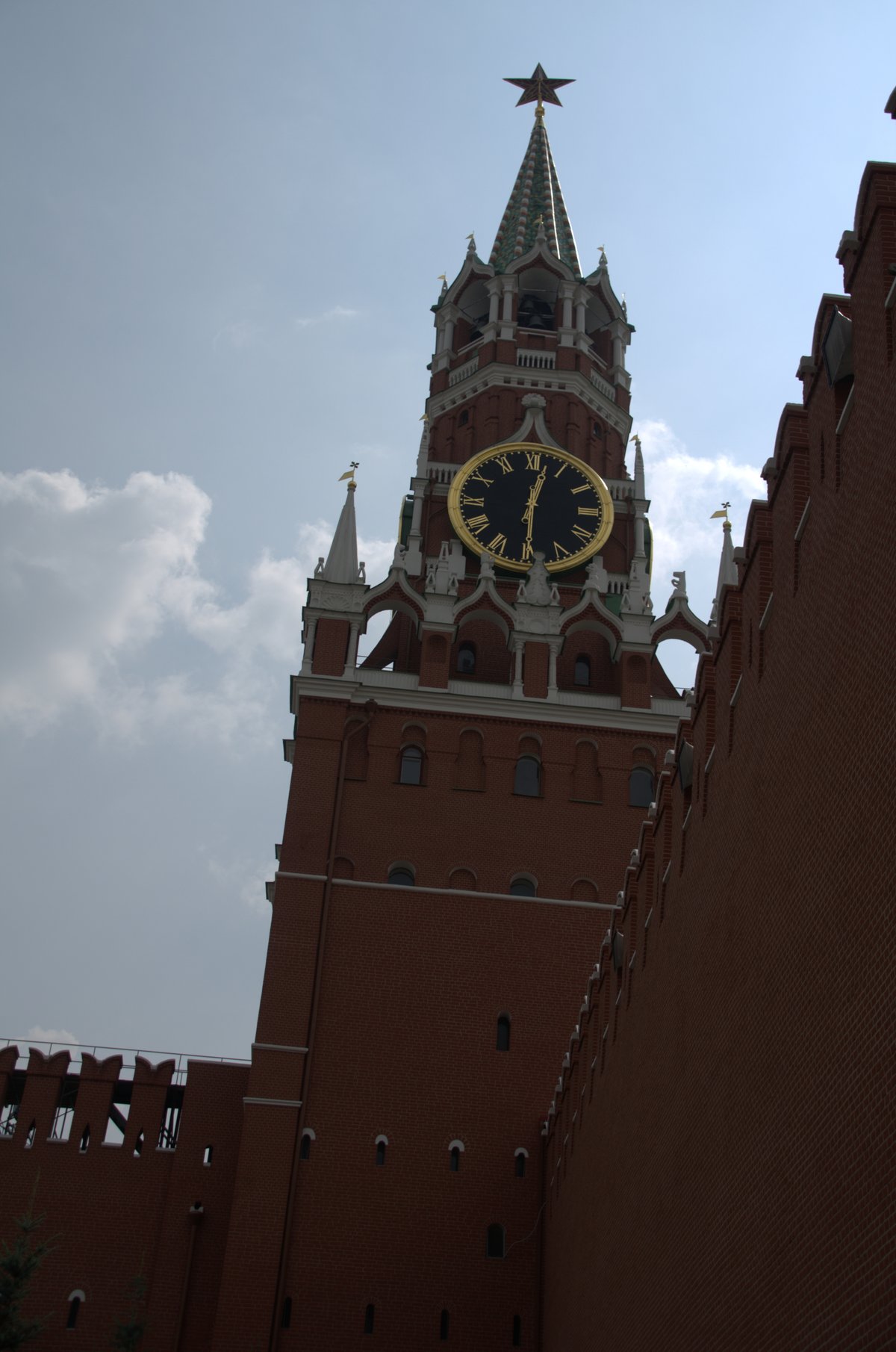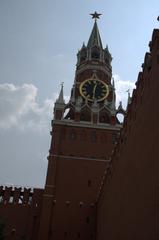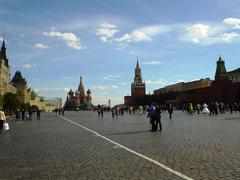
Spasskaya Tower Moscow: Visiting Hours, Tickets, and Historical Significance Guide
Date: 14/06/2025
Introduction: History and Cultural Importance
The Spasskaya Tower (Спасская башня), known as the “Savior’s Tower,” is one of Moscow’s most iconic landmarks, encapsulating centuries of Russian history, culture, and architectural excellence. Commissioned in 1491 by Ivan III and designed by Italian architect Pietro Antonio Solari, the tower was initially constructed as a defensive structure along the Kremlin’s eastern wall and served as a ceremonial entrance facing Red Square (UNESCO). Over the years, it has become a powerful symbol of Russian statehood and Orthodox spirituality, named after the venerated icon of Christ the Savior that once adorned its gate (Museum Studies Abroad).
Architecturally, the tower is a unique blend of Russian Gothic and Italian Renaissance styles, notable for its red brick façade, intricate white stone details, and the renowned Kremlin chimes—a clock with four faces, each over six meters in diameter. The tower is crowned by the famous ruby-red star, installed in 1937 to replace the imperial double-headed eagle, signifying the Soviet era (How to Russia; Hotel Vista).
Throughout its existence, the Spasskaya Tower has played a key role in Russian history, surviving significant events such as Napoleon’s 1812 invasion and serving as the main ceremonial entrance during tsar coronations and national celebrations (We Heart Moscow). Today, while the tower’s interior remains closed to general visitors, its exterior and surrounding area are major attractions, offering unparalleled views of Red Square and the Kremlin ensemble.
Table of Contents
- Introduction: History and Cultural Importance
- Origins and Early Construction
- Architectural Evolution and Symbolism
- Historical Events and Restoration
- Religious and Political Significance
- The Spasskaya Tower in the Modern Era
- Visiting the Spasskaya Tower: Practical Information
- Architectural Features and Preservation
- Frequently Asked Questions (FAQ)
- Conclusion
- References
Origins and Early Construction
Commissioned by Ivan III in 1491, the Spasskaya Tower was designed by Pietro Antonio Solari as part of the Kremlin’s extensive fortification project (UNESCO). Initially serving as a defensive stronghold, the tower’s gate faced Red Square and became the ceremonial passage for royalty and dignitaries. The name “Spasskaya” refers to “Spas” (Savior), highlighting its spiritual significance through the placement of Christ the Savior’s icon above the gate (Museum Studies Abroad).
Architectural Evolution and Symbolism
Blending Russian and Italian Renaissance elements, the Spasskaya Tower was constructed from red brick with detailed white stone accents. It stands 71 meters tall and is topped with a ruby-red star, installed in the Soviet era, replacing the original double-headed eagle. The iconic Kremlin chimes clock, with four massive faces, has become a national timekeeper, marking official Moscow time (Hotel Vista).
Historical Events and Restoration
The tower endured significant damage during the French invasion of 1812, with restoration efforts led by Russian patriots soon after (Hotel Vista). In the 20th century, restoration experts preserved the tower’s original architectural features. The gates, once reserved exclusively for ceremonial use, are now accessible to tourists during guided events (We Heart Moscow).
Religious and Political Significance
Historically dedicated to Christ the Savior, the Spasskaya Tower symbolizes the union of Russian Orthodox spirituality and state power. Visitors in past centuries observed religious rituals—removing hats and crossing themselves—when passing through the gate. Politically, the tower remains the primary ceremonial entrance for state occasions and national celebrations (Museum Studies Abroad; How to Russia).
The Spasskaya Tower in the Modern Era
Since the 1917 Revolution, the Kremlin has become the seat of Russian government, with the Spasskaya Tower’s chimes formalized as the nation’s official time signal. The tower features prominently in national celebrations, notably during New Year’s Eve, when its chimes are broadcast to mark the arrival of the new year (UNESCO; We Heart Moscow).
Visiting the Spasskaya Tower: Practical Information
Visiting Hours and Tickets
- Kremlin Grounds: Open from 10:00 AM to 5:00 PM, closed on Thursdays. Hours may vary on public holidays or during special events (Kremlin Official Website).
- Red Square: Open 24/7; the Spasskaya Tower can be admired at any time from outside.
- Tickets: Required for access to Kremlin grounds and museums; purchase at the Kutafya Tower ticket office or online. Prices generally range from 700–1,000 RUB for adults, with discounts available.
Accessibility
The Red Square and Kremlin surroundings are largely accessible, with paved walkways and some ramps, though cobblestone sections may be uneven. The historic structure of the Spasskaya Tower restricts interior access and presents challenges for those with mobility issues. Consult the ticket office for current accessibility options.
Guided Tours and Special Events
- Guided Tours: Available in multiple languages, often including the Spasskaya Tower as part of Kremlin tours.
- Audio Guides: Rentable at the ticket office, with commentary in several languages.
- Special Events: The annual Spasskaya Tower International Military Music Festival (late August–September) fills Red Square with performances from military bands worldwide.
How to Get There
- Metro Stations: Okhotny Ryad (Line 1), Teatralnaya (Line 2), and Ploshchad Revolyutsii (Line 3) are all within a 5–10 minute walk.
- Walking Routes: Well signposted from nearby stations; Red Square is pedestrian-friendly.
Photography Tips and Viewing Points
- Best Angles: Center of Red Square, steps of St. Basil’s Cathedral, and upper levels of GUM department store.
- Lighting: Early mornings and late afternoons provide optimal light; evening illumination offers dramatic views.
- Guidelines: Photography is allowed outside; restrictions apply within certain Kremlin interiors.
Nearby Attractions
- St. Basil’s Cathedral: Distinctive onion domes adjacent to Red Square.
- Lenin’s Mausoleum: Historic resting place of Vladimir Lenin.
- State Historical Museum: Extensive Russian history collections.
- GUM Department Store: Shopping, dining, and panoramic views.
Architectural Features and Preservation
The Spasskaya Tower’s architecture is characterized by a square base, pointed arches, battlements, and ornate spires. The clock mechanism, known as the Kremlin chimes, is a marvel of engineering, and ongoing preservation efforts ensure the structure retains its historic integrity while remaining accessible to visitors (Hotel Vista).
Frequently Asked Questions (FAQ)
Q: What are the Spasskaya Tower visiting hours?
A: Kremlin grounds are open 10:00–17:00, closed Thursdays; check for holiday variations. Red Square is accessible 24/7.
Q: Can I enter the Spasskaya Tower?
A: Interior access is not available, but the tower is a central part of most Kremlin tours.
Q: Where do I buy tickets?
A: Online or at the Kutafya Tower ticket office.
Q: Is the Spasskaya Tower accessible for wheelchair users?
A: The area is generally accessible, though some cobblestone paths may be uneven; check at ticket offices for assistance.
Q: Are guided tours available in English?
A: Yes, both guided and audio tours in English are widely offered.
Q: Is photography allowed?
A: Yes, outside the tower and on Red Square; restrictions apply inside some Kremlin buildings.
Conclusion
The Spasskaya Tower stands as a testament to Moscow’s layered history, architectural splendor, and vibrant public life. While interior access is restricted, the tower’s imposing presence on Red Square, its legendary clock chimes, and its role in national celebrations make it a must-visit for anyone traveling to Moscow. Plan ahead with ticket bookings, arrive early for the best experience, and consider guided tours or special events for deeper immersion.
Stay informed with the latest updates via the official Kremlin website, and enhance your visit with the Audiala app for interactive maps and audio guides. For more travel inspiration and practical advice, explore our related posts and follow us on social media.
Explore More
References
- Kremlin and Red Square, Moscow (UNESCO)
- Kremlin Moscow History (Museum Studies Abroad)
- Exploring Russia’s Iconic Tower Landmarks (How to Russia)
- Moscow Kremlin – History and Construction of the Towers (Hotel Vista)
- Spasskaya Tower (We Heart Moscow)
- Spasskaya Tower (ibnbattutatravel.com)
- Spasskaya Tower (GPSmyCity)






















































































































































































































































































